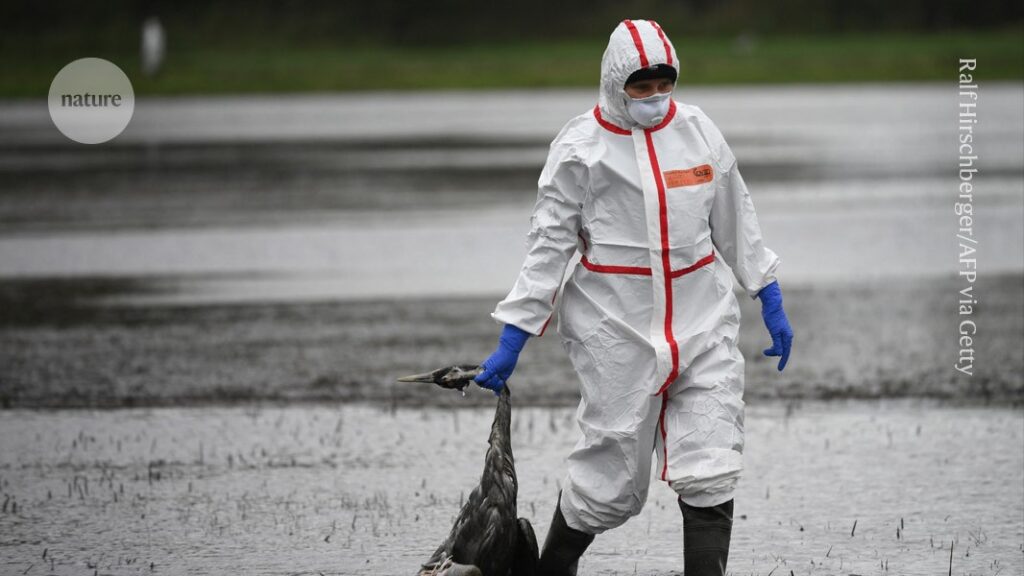Attention has been focused on avian influenza virus H5N1 in the past few years, but scientists are concerned about the spread of other bird viruses.Credit: Ralf Hirschberger/AFP via Getty
A bird flu virus that has often been ignored because it mostly causes minor disease in birds has the potential to cause a human pandemic, says a team that has tracked how the H9N2 virus has become better adapted to infect people. The researchers say more surveillance of the virus is needed.
In the past few years, surveillance has been focused on the avian influenza virus H5N1, which has spread across most continents and can cause severe disease and death in people. Since 2020, H5N1 has killed about 21 people. In North America, the virus is also spreading among dairy cows.
Less attention is being paid to H9N2, says Kelvin To, a clinical microbiologist at the University of Hong Kong, despite the virus being the second most common strain of bird flu that infects people. H9N2 has caused 173 infections in people since 2015, mostly in China, says To, who presented his team’s research at the Pandemic Research Alliance International Symposium in Melbourne, Australia, on 27 October.
H9N2 might be more prevalent than we realize, says Michelle Wille, who studies bird flu at the Peter Doherty Institute for Infection and Immunity in Melbourne. Infections are probably being missed because they do not result in severe infection or hospitalization in people, or because people are more commonly tested for the H5N1 instead, she adds.
Genetic changes
Scientists are yet to find evidence of person-to-person transmission of H9N2, which would be needed for it to lead to a pandemic. But To and his team have found that H9N2 underwent genetic changes that began around 2015 that have made the virus more infectious. In cell-based experiments, a version of the H9N2 virus collected in 2024 infected more human cells than did a historical sample collected in 1999. The modern version also showed improved binding to various receptors on human cells. This means the virus has adapted to spread among people1, reported To and his colleagues in Emerging Microbes & Infections earlier this month.
The virus would have to undergo several more changes before it could cause sustained transmission between people, says Wille. The virus has to change to preferentially bind to human receptors instead of receptors found in bird cells and has to adapt how well it grows at temperatures and pH levels of humans, which are different from birds.

